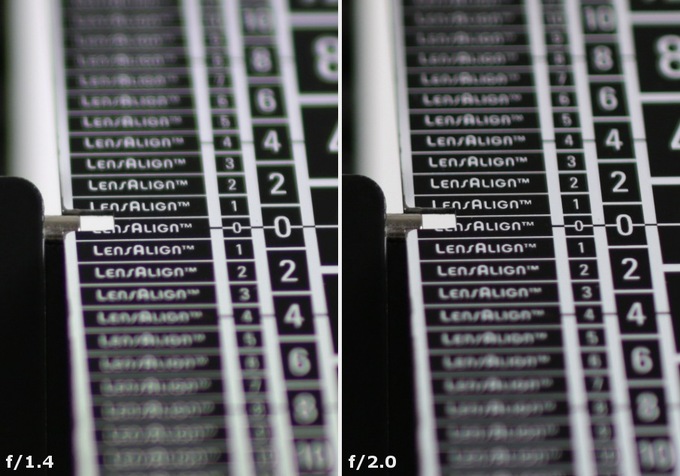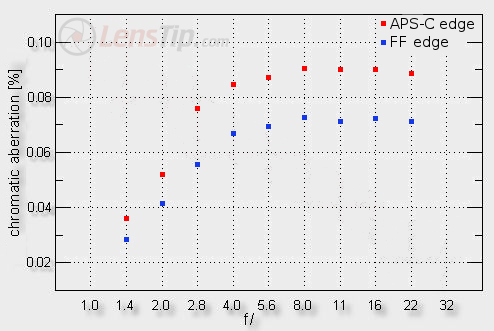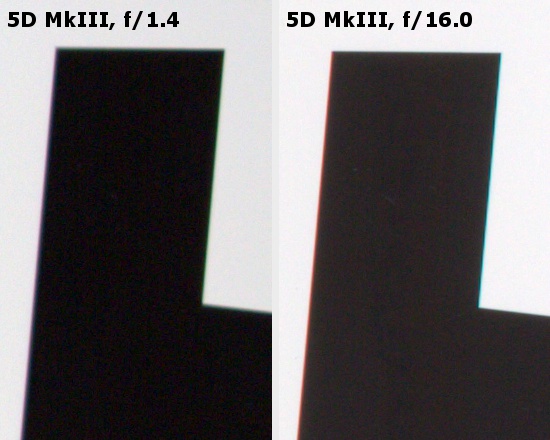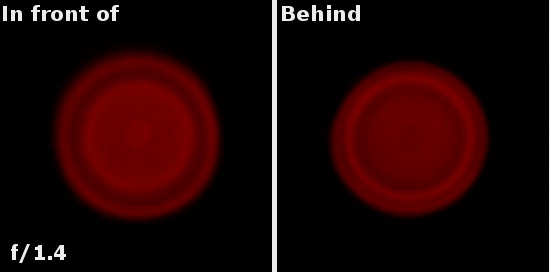Samyang 50 mm f/1.4 AS UMC
5. Chromatic and spherical aberration
At the maximum relative aperture the longitudinal chromatic aberration can be noticed but its level is not high. On stopping down the aperture to f/2.0 that aberration decreases even further and it can be seen pretty clearly in photos presented below.
 |
Please Support UsIf you enjoy our reviews and articles, and you want us to continue our work please, support our website by donating through PayPal. The funds are going to be used for paying our editorial team, renting servers, and equipping our testing studio; only that way we will be able to continue providing you interesting content for free. |
- - - - - - - - - - - - - - - - - - - - - - - - - - - - - - - - - - - - - - - - - - - - - - - -
The tested lens has almost no problems whatsoever with the lateral chromatic aberration. Near the maximum relative aperture its level is low; on stopping down it increases but despite that trend it reaches just a borderline between low and medium values.

 |
Spherical aberration
The lens doesn’t have any „focus shift” tendency but still the spherical aberration is not corrected in a perfect way. You can notice it in defocused circles which feature a very distinct ring – darker in front of the focus, lighter behind the focus. That effect disappears only by f/2.0 so the spherical aberration contributes noticeably to the worsening of the image quality by f/1.4; it stops being bothersome after a slight stopping down of the aperture.







